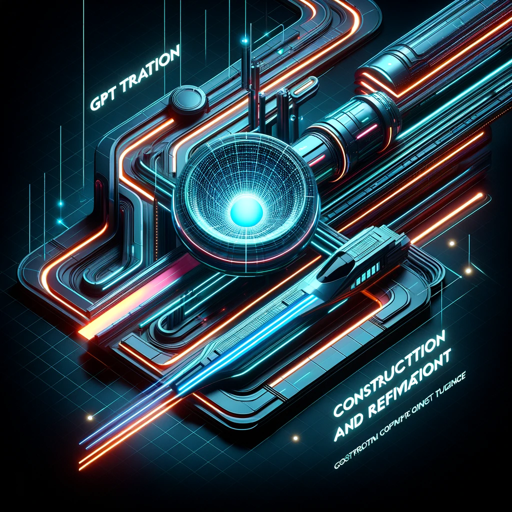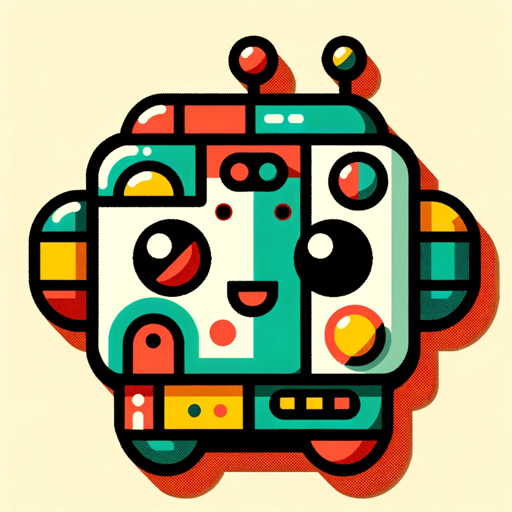Assistants API and GPT+ Builder-AI-driven assistants for integration
Empower your applications with AI-driven custom GPTs.
What is a ChatGPT GPT
Help create an API action for a GPT
Move a GPT to the Assistants API
Explain the OpenAI Assistants API
Related Tools
Load More
GPT-Builders' Assistant
Effortless GPT Creation : Your Go-To Assistant for Tailoring Perfect Descriptions, Instructions, and Behaviors for Custom GPTs

GPT Builder
User-friendly assistant for creating GPTs.

Create GPT
I'm here to help you create your own unique GPT!

Webflow GPT
I am your expert for all things Webflow. I can help you with ideas, debugging and more!

Custom GPT Wizard
Make GPTs with one prompt with this self aware GPT wizard, an expert in crafting custom GPTs with empathetic guidance.

Assistants Helper
I am a Master of the Open AI Assistants Documentation and can help you build any swarm of assistants
20.0 / 5 (200 votes)
Overview of Assistants API and GPT+ Builder
The Assistants API and GPT+ Builder are designed to empower developers to create custom AI-driven applications and workflows. These tools facilitate the integration of advanced AI functionalities into various platforms and services, allowing for tailored user experiences. The Assistants API focuses on enabling seamless integration of AI capabilities into existing systems, providing a robust framework for creating conversational agents, automation processes, and more. GPT+ Builder, on the other hand, allows developers to fine-tune and customize GPT models, enhancing them with specialized skills or knowledge domains. Together, these tools provide a comprehensive solution for developers looking to harness the power of AI in a way that is both flexible and scalable. For example, a developer can use the Assistants API to create a customer support chatbot that can handle complex queries, while GPT+ Builder allows them to train the model specifically for the industry in which their business operates.

Core Functions of Assistants API and GPT+ Builder
Custom Skill Development
Example
A retail company can use GPT+ Builder to develop a custom model trained on their product catalog, enabling the AI to assist customers with highly specific product recommendations.
Scenario
By training the model on product data and customer queries, the AI can suggest items based on user preferences, past purchases, and current trends. This enhances the shopping experience by providing personalized recommendations.
Seamless Integration via Assistants API
Example
A healthcare provider might integrate the Assistants API into their patient management system to automate appointment scheduling and handle patient inquiries.
Scenario
The API allows the healthcare provider to incorporate an AI assistant that can interact with patients through multiple channels, such as mobile apps and websites, providing a consistent and efficient experience.
Workflow Automation
Example
A project management software company can use the Assistants API to automate task assignment and tracking based on project progress and team availability.
Scenario
The API enables the creation of a smart assistant that analyzes project data in real time and makes decisions about task delegation, ensuring that projects stay on track without requiring constant human intervention.
Target Users of Assistants API and GPT+ Builder
Developers and Software Engineers
This group benefits from the ability to integrate AI into their applications, creating sophisticated and responsive systems. The Assistants API and GPT+ Builder are particularly useful for developers looking to build customized AI experiences without starting from scratch, allowing them to leverage pre-existing models and APIs to accelerate development.
Businesses in Niche Markets
Businesses operating in specialized fields, such as legal, healthcare, or finance, can use these tools to develop AI models that understand the unique language and requirements of their industry. This enables them to offer AI-driven services that are finely tuned to the needs of their clients, providing a competitive edge in their market.

Step-by-Step Guide to Using Assistants API and GPT+ Builder
1
Visit aichatonline.org for a free trial without login; no need for ChatGPT Plus. This allows you to explore the Assistants API and GPT+ Builder without any initial setup or commitment.
2
Familiarize yourself with the interface and available tools. Review the documentation and examples provided within the platform to understand the capabilities and how to best utilize them for your needs.
3
Select or create a custom GPT by defining the specific tasks and personality traits that align with your project goals. Use the intuitive drag-and-drop builder to configure the model according to your requirements.
4
Test and refine your GPT by interacting with it directly through the interface. Make adjustments as needed to improve accuracy, tone, and performance based on real-time feedback.
5
Deploy your GPT via the Assistants API to integrate it into your applications or workflows. Monitor performance and iterate as necessary to ensure it continues to meet your evolving needs.
Try other advanced and practical GPTs
DJ Song Match
AI-powered BPM and key matcher for DJs

Prompt Engineer GPT
AI-powered prompt creation tool.

Bobby "Axe" Axelrod
Ruthless AI-driven market expertise.
getsite9000
AI-powered tool for website creation
MediWise AI
AI-Powered Medical Imaging Analysis

ChatPOD
Explore podcasts with AI-powered insights
Seo Optimised Blog Post Writer GPT
AI-powered, SEO-optimized content creation

PMax Pro
AI-Powered Ad Texts for Google PMax

OptionsTraderAI
AI-powered insights for smarter trading.

AI summary ⛩ Samurai
AI-Powered Summarization for Everyone

WimmelBuilder
AI-powered tool for simplified illustration creation.

Voice/Style/Tone AI Prompt Snippet Generator
AI-Powered Precision in Writing

- Content Creation
- Data Analysis
- Automation
- Customer Support
- User Interaction
Frequently Asked Questions about Assistants API and GPT+ Builder
What is the primary purpose of the Assistants API?
The Assistants API is designed to integrate AI-powered assistants into various applications, enabling developers to customize and deploy AI models tailored to specific tasks and workflows.
Can I create a custom GPT without programming knowledge?
Yes, the GPT+ Builder offers an intuitive interface that allows users to create custom GPT models through a drag-and-drop approach, making it accessible even to those without programming skills.
What are the common use cases for the Assistants API?
Common use cases include automating customer support, enhancing content creation, conducting data analysis, and improving user interaction in applications through AI-powered conversational agents.
How can I ensure my custom GPT is optimized for performance?
To optimize your custom GPT, regularly test it with diverse queries, refine its training data, and adjust its parameters based on user feedback to improve accuracy and relevance.
Is there a way to monitor the performance of my deployed GPT models?
Yes, the Assistants API provides monitoring tools that allow you to track the performance of your deployed models, analyze usage patterns, and make necessary adjustments for continuous improvement.